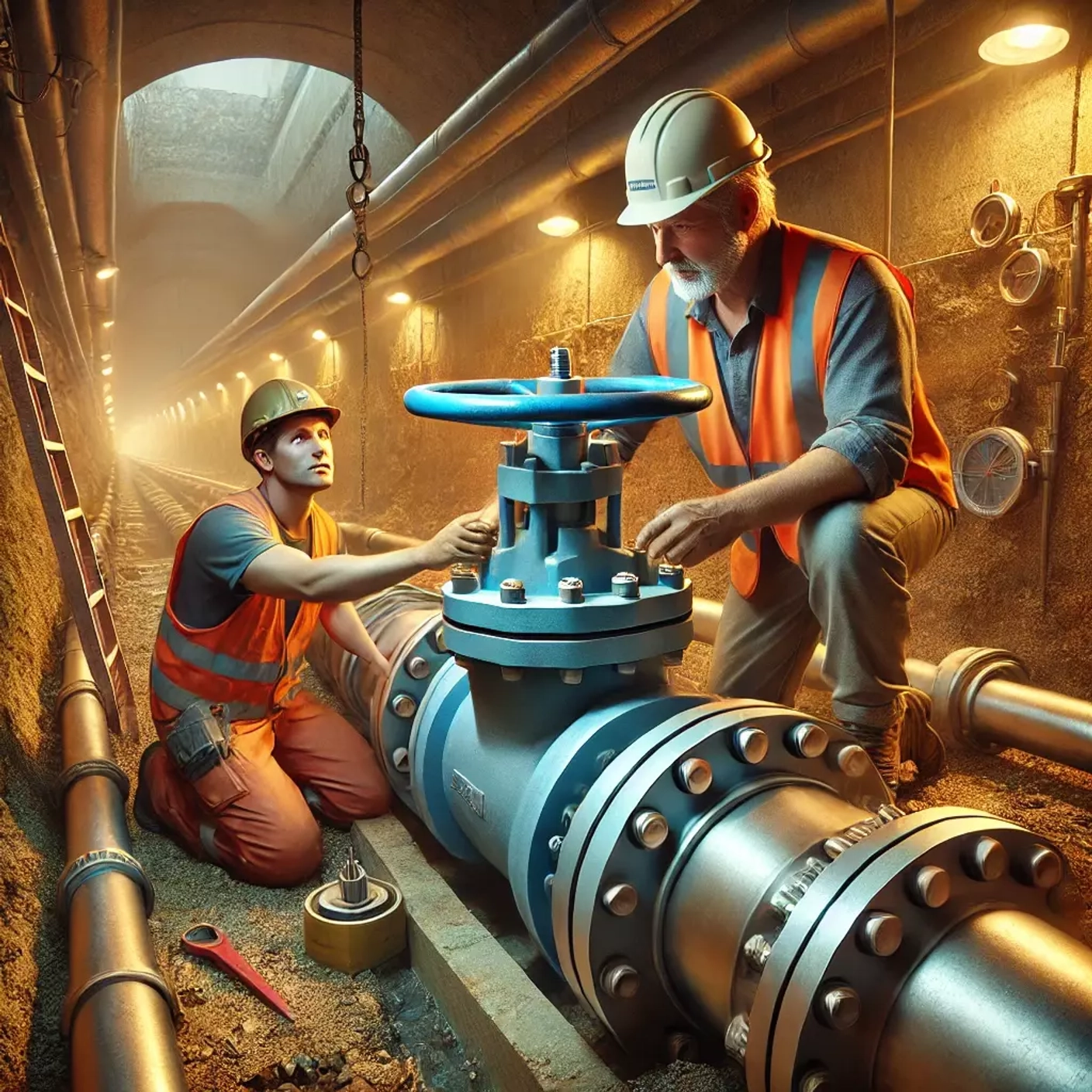At the heart of every efficient and safe water supply system lie valves and gates. These critical components not only control water flow but also play a fundamental role in the safety and reliability of the entire system. As an engineer with over 15 years of experience in the sector, I've seen firsthand how the proper selection of these elements can make the difference between a robust system and one prone to failures. Let's dive into the fascinating world of risk assessment and reliability management in valve selection for water supply systems, with a specific focus on the European market.
European Regulations and Standards
Before delving into analysis methodologies, it's crucial to understand the European regulatory framework governing the selection and use of valves in water supply systems.
EN 12266: The Reference Standard
EN 12266 is the European standard for industrial valve testing. This standard is divided into two parts:
-
EN 12266-1: Pressure tests, test procedures, and acceptance criteria for metallic valves.
-
EN 12266-2: Tests, test procedures, and acceptance criteria for non-metallic valves.
These standards are fundamental in ensuring the quality and reliability of valves used in water systems throughout Europe.
CE Marking
In the European market, CE marking is mandatory for valves used in pressure systems. This marking indicates that the product meets the essential safety requirements established in the Pressure Equipment Directive (PED) 2014/68/EU.
Drinking Water Directive 98/83/EC
This directive sets the quality standards for water intended for human consumption in the EU. For valves, this translates into specific requirements regarding materials that can come into contact with drinking water.
Reliability Analysis and Failure Prediction Methodologies
With this regulatory framework in mind, let's move on to reliability analysis methodologies.
Failure Mode and Effects Analysis (FMEA)
FMEA remains a crucial tool, but in the European context, we must ensure that our analysis takes into account the specific requirements of the aforementioned regulations.
Fault Tree Analysis (FTA)
When conducting an FTA, it's important to consider not only mechanical failures but also potential non-compliance with European regulations as undesired events.
Comparison of MTBF Indicators for Different Valve Types
When comparing MTBFs (Mean Time Between Failures), we must keep in mind that these values may vary depending on operating conditions and specific requirements of each European country. For example, valves used in Nordic countries may have different MTBFs due to more extreme weather conditions.
Materials and Water Quality Certifications
In Europe, the selection of materials for valves in contact with drinking water is strictly regulated. Some examples of certification systems include:
-
WRAS (Water Regulations Advisory Scheme) in the United Kingdom
-
ACS (Attestation de Conformité Sanitaire) in France
-
KTW (Kunststoffe und Trinkwasser) in Germany
It's crucial to select valves that have the appropriate certifications according to the country of installation.
Redundancy Strategies to Ensure Continuous Operation
Redundancy strategies should be designed not only to improve reliability but also to facilitate maintenance without interrupting supply, thus meeting the expectations of continuous service in Europe.
Analysis of Failure Impact on Safety and Environment
In the European context, this analysis must take into account EU directives on environmental liability and flood risk management.
Development of Maintenance Plans Based on Risk Assessment
Maintenance plans should be designed to comply with European regulations and industry best practices. For example, the frequency of inspections may be dictated by local regulations or manufacturer recommendations based on European certifications.
Liability Insurance and Reputational Risk Management
In Europe, it's essential to have insurance that specifically covers risks associated with non-compliance with EU regulations. Additionally, reputational risk management must take into account the growing environmental awareness and transparency expectations of European consumers.
Conclusion
The proper selection and management of valves and gates in the European market requires a deep understanding not only of technical aspects but also of the complex web of regulations and certifications. By integrating these specific requirements into our risk assessment and reliability management strategies, we can ensure safe, efficient water supply systems that comply with European market demands.
Remember, each system is unique, and requirements may vary between EU countries. It's always advisable to consult with local experts and stay updated on the latest regulations and best practices in the European water sector.


